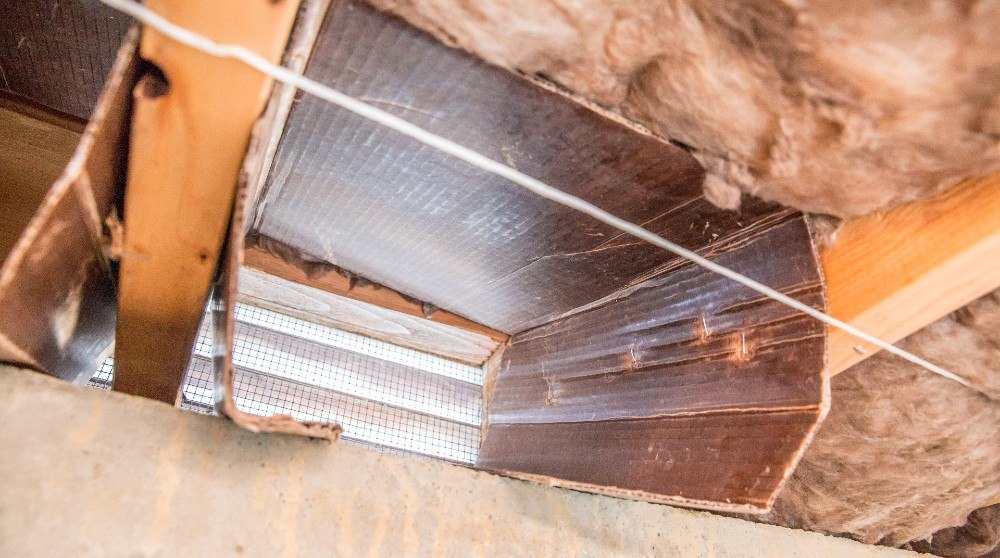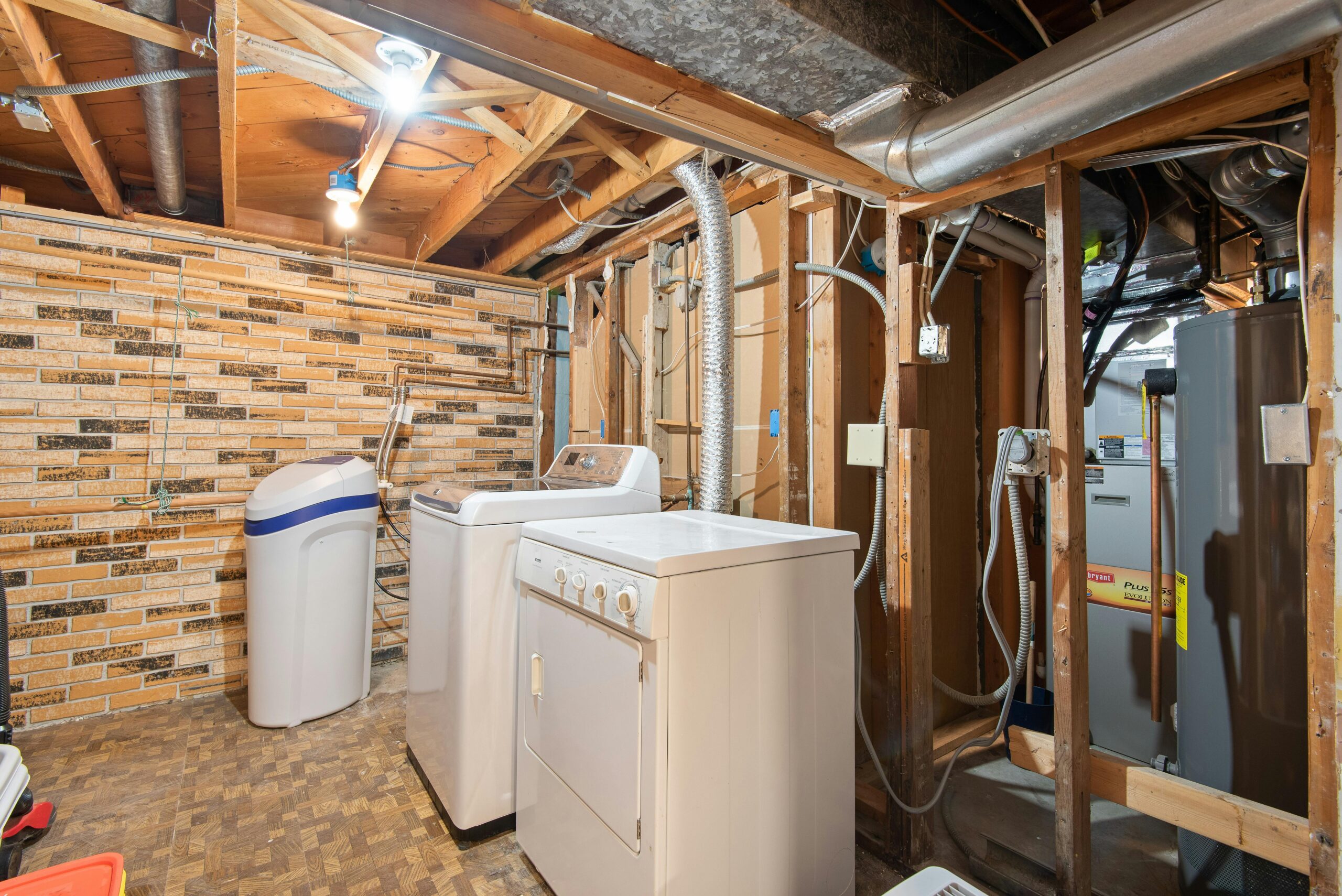Do you know how moisture escapes your crawl space, or if it does at all? Chances are you’ve never really thought about it … but when it comes to the energy efficiency and health of your home, it’s important to understand the crawl space ventilation beneath your feet. Having too much moisture in your crawl space can lead to a whole mess of issues — from mold to pests to structural damage. And depending on when and where your home was built, your crawl space could be ill-equipped to regulate its moisture levels.
In this blog post, the Crawl Pros team answers all of your top crawl space ventilation questions, even confronting the age-old vented vs. unvented crawl spaces debate. If you have any additional questions after reading, don’t hesitate to contact us by calling (866) 673-9626 or submitting the form at the bottom of this page for a free estimate. We’re here to help!
Vented vs. Unvented Crawl Space: Should I Seal My Crawl Space Vents?
We’ll cut to the chase. The short answer to whether or not you should seal your crawl space vents? Don’t do it. We almost never recommend closing or sealing your crawl space vents; the architect and engineers who designed your crawl space ventilation system designed it that way for a reason.
That said, our recommendation really depends on how well your space is insulated. If everything in your crawl space is properly insulated, including the above floors of your home and all of the piping, then your crawl space vents should be able to do their job effectively, mitigating water buildup in your home. While it may seem intuitive to close vents in the winter to keep your floors warm, closing your vents will more than likely only trap water in your crawl space, resulting in too much moisture and an increased risk of issues.
The Purpose of Crawl Space Ventilation
Especially in wetter areas like Seattle and Portland, the main purpose for having crawl space ventilation is the same reason we have crawl spaces in the first place: to regulate moisture levels in our homes. With that, crawl space ventilation exists primarily to prevent moisture buildup in your crawl space.
Improper Crawl Space Ventilation & the Stack Effect
Why prevent flooding? Well, standing water in your crawl space can lead to the growth of mold, mildew, and foundational wood rot — all things that impact the structural integrity of your home and/or the health of its occupants.
The impact of water in a crawl space doesn’t just stop beneath your house, however; it can actually cause issues throughout the home, even all the way up to the attic. Through a phenomenon known as the “stack effect,” the air from your crawl space moves up through the house and escapes through the vents in your attic. In fact, 40% of the air we breathe on the first floor of our homes comes from our crawl spaces. And when the crawl space is flooded, the air that travels up through your house is overly humid, forcing attic vents to manage more moisture than they were designed to manage. This, in turn, leads to excess moisture in your attic as well as your crawl space, prompting the development of mold, mildew, and other water-related issues above and below your living space.
Venting a Crawl Space: How Does Crawl Space Ventilation Work?
Crawl space ventilation is easiest to explain if we split the house into two areas: the heated space and the non-heated space. The heated space, where the occupants live, has mechanical methods of circulating air and regulating temperature, i.e., your heating and cooling systems. To prevent moisture buildup throughout the home, the non-heated spaces — your crawl space and attic — must also have a method of circulating air. Crawl space vents are a natural, non-mechanical solution to ensure airflow in these uninhabited areas of your house and prevent excess water in the air.
At this point, building codes often require some sort of crawl space ventilation in homes. Washington state building code, for example, requires builders to include a 1-sf ventilation opening for every 300 square feet of under-floor area.
One important thing to note here is that crawl space insulation, as well as properly installed vapor barriers, play a huge role in crawl space ventilation. In order to properly regulate the air that enters and exits your crawl space, you need to create a controlled environment. Crawl space insulation ensures the air that’s meant to escape, escapes, and, conversely, the air that’s meant to enter, enters. A vapor barrier, working in tandem with insulation, slows or prevents ground moisture from evaporating and mixing with crawl space air. Proper crawl space insulation is critical for not just controlling the moisture levels in your home, but also maintaining its energy efficiency.
Do Ventilation Fans Work?
Ventilation fans, sometimes called circulation fans, are a mechanical solution for controlling the water in your crawl space, and they do work if installed properly into a functional ventilation system.
Sparing you the details of how cross ventilation works in the home, the general rule of thumb when it comes to ventilation fans is to try your best to maintain however your house was originally built — meaning, don’t add fans if your crawl space was meant to be regulated non-mechanically. Superfluous fan installations can not only result in ineffective ventilation systems, but they can also make you unnecessarily dependent on mechanical ventilation systems; so, when your power goes out, the water starts collecting.
Why Are Some Crawl Spaces Vented and Others Unvented?
All crawl spaces are not built equal. An Arizona home built in the 1950s is likely to have a different crawl space ventilation system than new construction in the Seattle area. Different building techniques — specifically, having a vented crawl space vs. an unvented crawl space — are popular in different areas of the country. Whether your home has crawl space vents or not usually depends on 1) where you live, and 2) the age of your home.
Location, Location, Location
You’ll find that crawl spaces, in general, are more popular in some areas of the country than others. The reason for this is mostly practical: if the climate is warm and dry, then you don’t really need a crawl space, or crawl space vents, as a non-mechanical solution for preventing excess moisture in your home. The sunny weather and dry soil is already doing that for you!
On the flip side, homes built on wet soil in humid areas need proper ventilation more so than others. As a company based in the Pacific Northwest, Crawl Pros knows this better than most. We can say with utmost confidence that water is the #1 cause of problems in the home, and proper crawl space ventilation and insulation can do wonders in preventing water buildup.
Age of Your Home
Before the 1940s and 1950s, there was little to no insulation in crawl spaces, making it more difficult and more expensive to heat your home. During this time period, homes sat around an R-11 insulation rating, below current building codes. The R-value measures the ability to prevent the transfer of heat; the larger the number, the less heat lost due to efficient and effective insulation. Currently, roofs should have a minimum R-30 rating, so the 20-point increase has really had a dramatic effect on energy efficiency in heating homes.
Vented crawl spaces are also more popular in older homes. As time went on, however, builders grew to understand the best methods of regulating crawl space moisture in their respective regions, evolving building techniques and norms for homes in their area.
Vented Crawl Spaces in the Pacific Northwest
As you can imagine, vented crawl spaces are extremely popular in the Pacific Northwest. In western Washington and Oregon, we’ve used crawl space and basement ventilation under the house for decades to combat excess moisture from the soggy soil underneath. Because so many problems in homes are caused by water, PNW builders have learned to raise houses off the wet soil to mitigate those issues. Attic vents are equally as important in circulating air to prevent the buildup of mold, mildew, and rot in your home.
Call Crawl Pros for Crawl Space Inspections
When it comes to crawl space ventilation, insulation, and everything in between, Crawl Pros is your go-to service provider. With locations in Washington and Oregon, Crawl Pros is the regional expert in crawl space and attic services. We understand common issues with houses in the region, know what to look for, and can offer thorough, accurate explanations and recommendations as a result. We’re so confident in our ability, in fact, that we offer a “Perfect Lifetime Guarantee” with all of our services, including water remediation services if moisture buildup has already occurred.
If you’ve got questions about your crawl space or attic, please submit the form below for your free estimate. We look forward to hearing from you!





